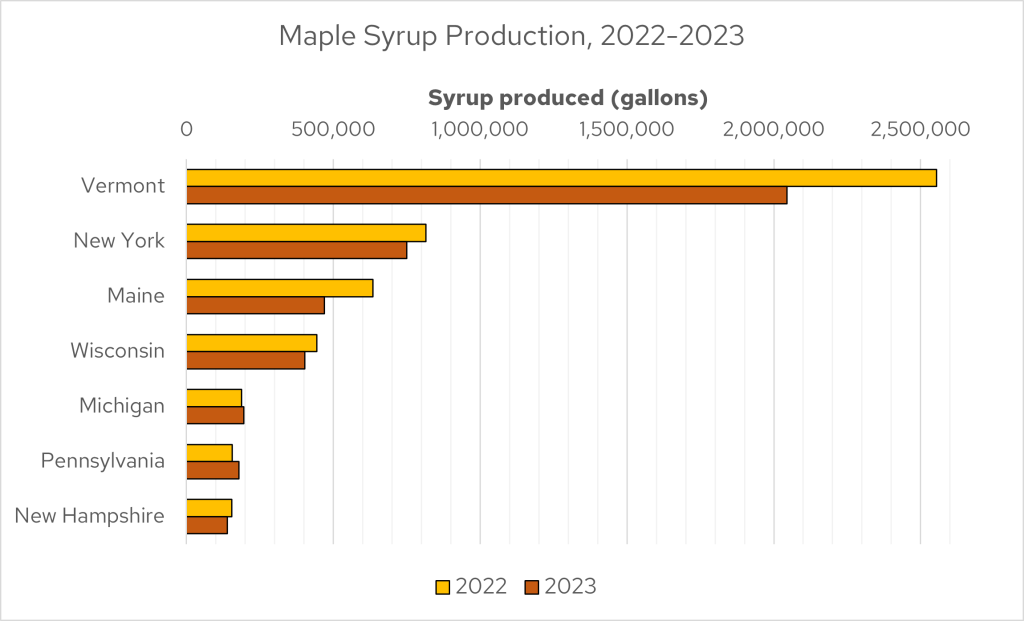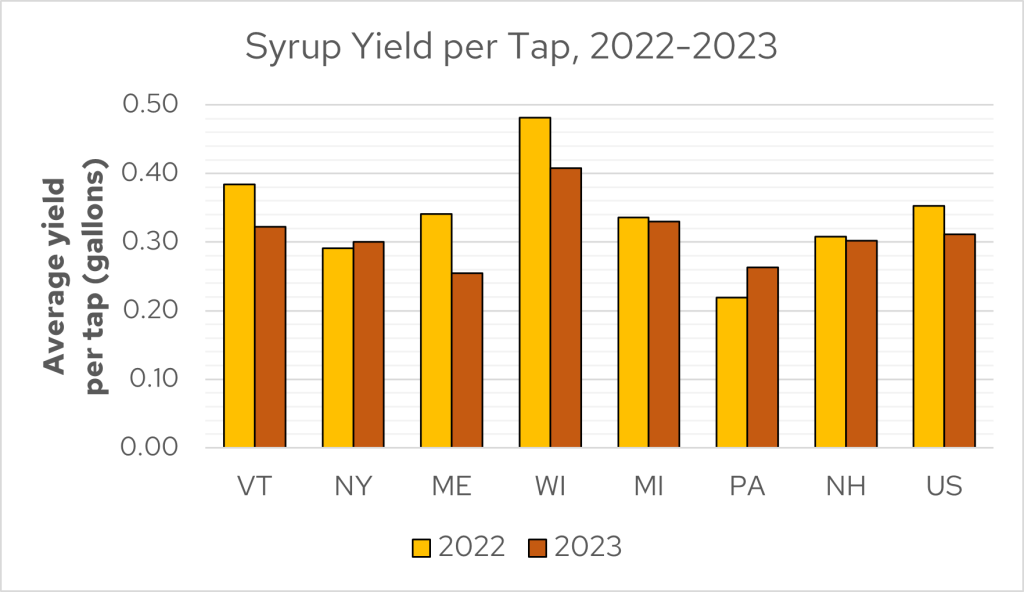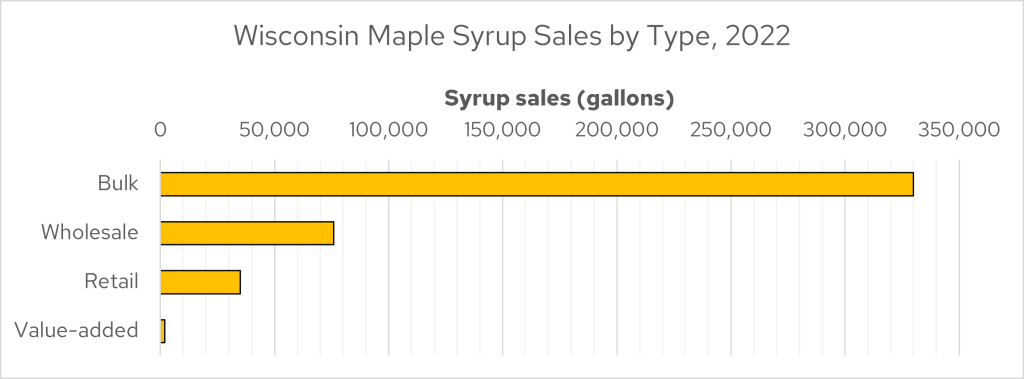The numbers are in for the 2023 maple syrup season! The USDA’s National Agricultural Statistics Service (NASS) released their annual maple syrup production report earlier this month. Here are some highlights.

Although total production in the state and country was somewhat lower than last year, Wisconsin remains the fourth-leading state by annual production volume. Wisconsinites produced 402,000 gallons of the sweet stuff this year.

Most states, including Wisconsin, saw a decrease in average yield per tap compared to last year. Wisconsin still boasts the highest yield of syrup per tap in the country: an average of 0.408 gallons per tap in 2023. The nationwide average was 0.311 gallons per tap.
The report also includes new insights on 2022 sales. For the first time, NASS included value-added products in its sales figures, compared grade A production to processing grade production, and tracked sap sales and prices.

About three-quarters of Wisconsin syrup was sold in bulk in 2022. Wholesale accounted for 17%, retail was 8%, and just 2,000 gallons of syrup—less than half a percent—went into value-added products. Grade A syrup was 94% of 2022 Wisconsin production, and processing grade was the remaining 6%.
The average retail price for syrup in Wisconsin was $52.70 per gallon, the average wholesale price was $35.70, and the average bulk price was $28.20 ($2.56 per pound), all slightly below the national averages. All in all, Wisconsin’s maple syrup production was valued at $13.9 million last year, up 15% from 2021.
As for sap sales, last year Wisconsin was the second-leading state, with our 1.5 million gallons trailing only Vermont’s 4.6 million gallons. The average sap price here was 29 cents per gallon, compared to 90 cents per gallon in Vermont and a nationwide average of 70 cents per gallon.
Next year, we’ll get even more detailed statistics on U.S. maple syrup production and producers—NASS plans to release the results of the 2022 Census of Agriculture in February 2024. Although filling out surveys about your operation might feel like a chore, it’s an important way to help the maple community. These data help legislators set agricultural policies, help institutions like the University of Wisconsin prioritize topics for research, and are used in farm succession planning. If you have more than 100 taps and did not receive an ag census form last year, make sure you are counted in the future by visiting https://portal.agcounts.usda.gov/portal/s/.
Are you curious to learn more about the latest data on maple syrup production? Check out the recording below of this month’s Maple Hour featuring our discussion with Greg Bussler, the Wisconsin State Statistician for NASS, and browse the full NASS report (maple syrup begins on page 11).




